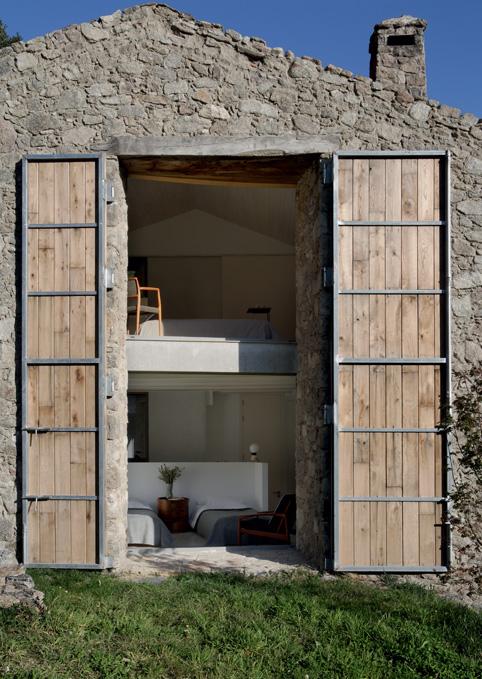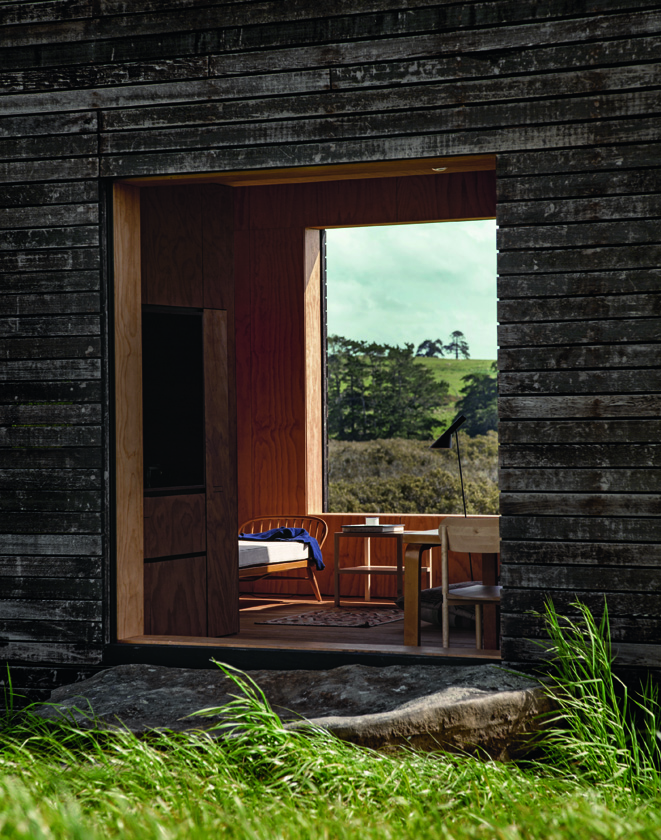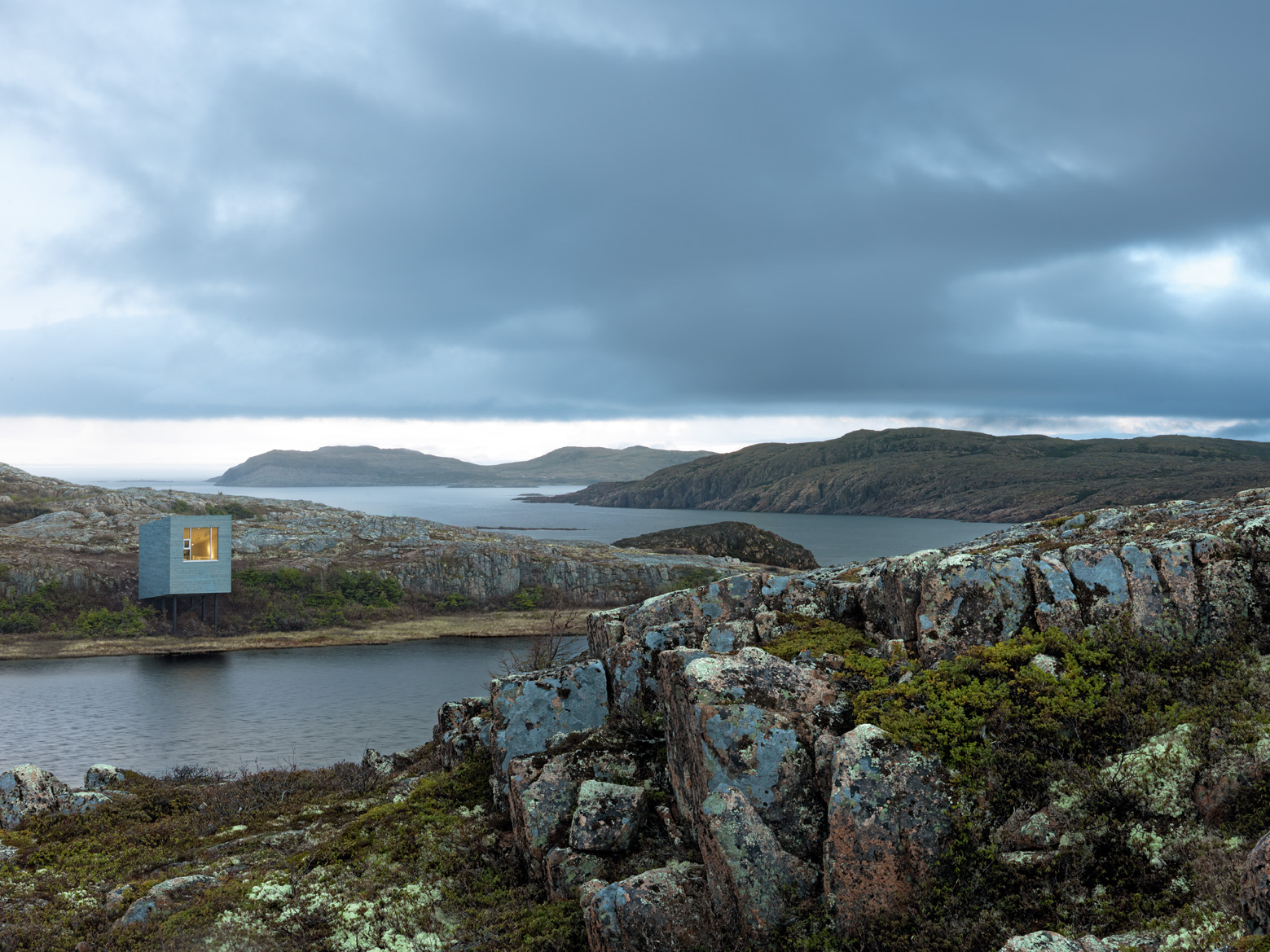The low-tech liberation of off-grid living

Henning Larsen Architects: Granja Experimental Alnardo, Valladolid, Castilla y León, Spain. Tucked into its sloping site, the farmhouse offers semi- private guest accommodation on the lower floor, private family space at the top and more social areas in between. 2019
Off The Grid: Houses for Escape, a new book from Thames and Hudson, provides inspiring design and architectural examples of dwellings that could liberate us from our reliance on fossil fuels and reduce our environmental footprint. If you're interested in going down the alternative living route, this is your handbook.
Each case study is fully (or almost fully) self-sufficient in terms of energy, water and even in some cases, food. Low-tech renewable energy options include wood burning stoves, private wells and rainwater harvesting, photovoltaics, domestic battery storage, heat pumps and small scale wind and hydroelectric turbines.

Ábaton Arquitectura: House in Extremadura, Cáceres, Extremadura, Spain. The house seeks to connect with its surroundings via large apertures, including the barn door to one side, which opens to reveal bedrooms on two levels. 2019
‘Breaking the conventional reliance on standard utility services and infrastructure requires a degree of imagination and confidence, but also allows a wealth of possibilities that make everyday living in remote and rural parts of the world a rewarding and tempting reality,’ writes Dominic Bradbury, author and architecture expert.
As well as practical and energy-efficient, the projects are located in some of the most beautiful pockets of the world from the far Northern Hemisphere to coastal environments allowing humans to experience and live alongside nature. The design and construction challenges that accompany these remote locations are also explored in the texts.
Favourite escapes include Scott & Scott's Alpine cabin on Vancouver island with its irregular, angular roof – complete with zero phone coverage; Studio Joseph's zinc-clad house submerged in an olive grove in California powered by solar; and Room 11’s ‘Home at the ends of the earth’ on Bruny Island in Tasmania, a ‘low-slung’ residence settled in a ‘mesmerizing’ landscape.

Boutique Modern: Buck’s Coppice, Hooke, Dorset, UK. The cabin is anchored to the shore but has a deck that cantilevers over the water, creating the impression that the house is floating. 2019

Scott & Scott Architects: Alpine Cabin, Vancouver Island, Canada. The sheltered porch doubles as a dry wood store – essential for heating the house. 2019

Cheshire Architects: Eyrie Cabins, Kaipara, North Island, New Zealand. The large picture windows of each structure frame views of both land and sea, exploring the relationship between the two, while offering privacy from the neighbouring cabin. 2019
Receive our daily digest of inspiration, escapism and design stories from around the world direct to your inbox.

Saunders Architecture: Bridge Studio, Deep Bay, Fogo Island, Newfoundland, Canada. The Bridge Studio is one of several small, sculptural artists’ retreats on this sparsely populated island. 2019

ÁBATON Arquitectura: House in Extremadura, Cáceres, Spain. 2019
INFORMATION
Off The Grid: Houses for Escape, £29.95, published by Thames and Hudson. For more information, visit the Thames and Hudson website
Harriet Thorpe is a writer, journalist and editor covering architecture, design and culture, with particular interest in sustainability, 20th-century architecture and community. After studying History of Art at the School of Oriental and African Studies (SOAS) and Journalism at City University in London, she developed her interest in architecture working at Wallpaper* magazine and today contributes to Wallpaper*, The World of Interiors and Icon magazine, amongst other titles. She is author of The Sustainable City (2022, Hoxton Mini Press), a book about sustainable architecture in London, and the Modern Cambridge Map (2023, Blue Crow Media), a map of 20th-century architecture in Cambridge, the city where she grew up.
-
 How Charles and Ray Eames combined problem solving with humour and playfulness to create some of the most enduring furniture designs of modern times
How Charles and Ray Eames combined problem solving with humour and playfulness to create some of the most enduring furniture designs of modern timesEverything you need to know about Charles and Ray Eames, the American design giants who revolutionised the concept of design for everyday life with humour and integrity
-
 Why are the most memorable watch designers increasingly from outside the industry?
Why are the most memorable watch designers increasingly from outside the industry?Many of the most striking and influential watches of the 21st century have been designed by those outside of the industry’s mainstream. Is it only through the hiring of external designers that watch aesthetics really move on?
-
 This Fukasawa house is a contemporary take on the traditional wooden architecture of Japan
This Fukasawa house is a contemporary take on the traditional wooden architecture of JapanDesigned by MIDW, a house nestled in the south-west Tokyo district features contrasting spaces united by the calming rhythm of structural timber beams